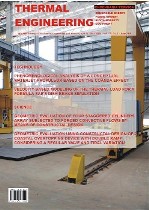COMPARISON OF DIFFERENT METHODS FOR GENERATION AND ABSORPTION OF WATER WAVES
DOI:
https://doi.org/10.5380/reterm.v18i1.67053Keywords:
OpenFOAM®, interFoam, IHFoam/OlaFlow, waves2Foam, GroovyBC, regular waveAbstract
The knowledge of water wave characteristics (generation, propagation, transformation and breaking) is fundamental for hydrodynamic studies and the design of ocean, coastal and port structures. In addition to the small-scale experimental studies, the use of numerical models is also a very important tool in hydrodynamic studies. To have reliable numerical results a proper validation is required. The main objective of this paper is to compare different methods of wave generation and wave absorption in a numerical flume, and to find what is the most suited to simulate non-breaking regular wave propagation in a two-dimensional flume in deep water condition. The numerical simulations were made using the OpenFOAM® software package. Two solvers, waves2Foam and IHFoam/OlaFlow, the utility GroovyBC and a mesh stretching technique are compared. These numerical codes solve the transient Navier-Stokes equations and use a VoF (Volume of Fluid) method to identify the free surface. A solution dependence study with the methods of wave generation and wave absorption is presented. The results are also compared with the theoretical wave and experimental data. The results show that the different methods of generation produce waves similar to the theoretical and the experimental ones, only slightly differences were visible. The three method of wave dissipation considered produce very different results: IHFoam/OlaFlow is not able to dissipate the wave tested; the mesh stretching technique is able to dissipate the waves but produces a water level rise; the waves2Foam solver is able to dissipate properly the wave tested.
Downloads
Published
How to Cite
Issue
Section
License
Direitos Autorais para artigos publicados nesta revista são do autor, com direitos de primeira publicação para a revista. Em virtude da aparecerem nesta revista de acesso público, os artigos são de uso gratuito, com atribuições próprias, em aplicações educacionais e não-comerciais.



